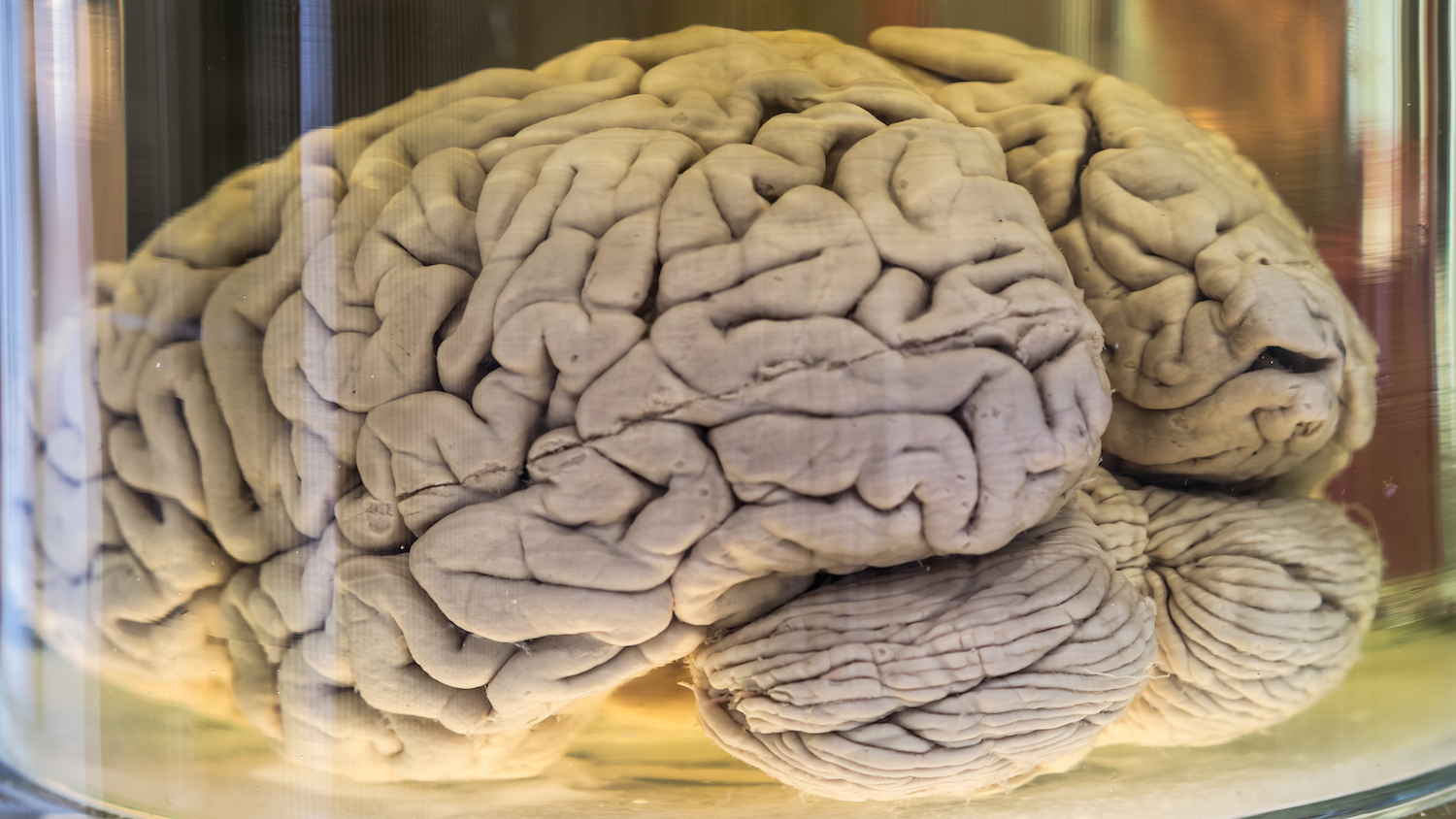Why Do Our Brains Have Folds?


Most of us have long accepted that our brains look like overgrown, shriveled walnuts. But why do our brains have those telltale wrinkles?
The cortex, or the outer surface of the brain — what's colloquially referred to as "gray matter" — expands and subsequently folds as our brains develop in the womb, said Lisa Ronan, a research fellow in the Department of Psychiatry at the University of Cambridge in England.
In essence, this expansion causes pressure to increase in that outer surface, which is then mitigated by folding, Ronan, told Live Science. [What If Humans Were Twice as Intelligent?]
Basically, imagine pushing at either end of a piece of rubber — at some point, the surface will bend in response to the increasing pressure. Or, if you're into geology, think of it like two tectonic plates crashing into each other: The pressure during the collision eventually becomes so great that those plates experience a geological fold.
These countless folds allow humans to pack in more neurons which, in turn, can mean more advanced brains with increased cognitive abilities, Ronan said.
However, folded brains are hardly ubiquitous, as most animals' brains aren't folded. For instance, the cortex of mice and rats does not expand enough during development to lead to folding, meaning their brains are wholly smooth surfaces.
When brain folding does happen, it tends to occur in animals with larger brains, Ronan told Live Science in an email. "But this isn't always the case — some large mammals like the manatee have far fewer folds than researchers would otherwise expect based on the size of their brain," she said.
Get the world’s most fascinating discoveries delivered straight to your inbox.
There's a good reason for this: whether a fold forms depends not only on the overall growth of the cortex, but also the physical properties of that part of the cortex. For example, thinner regions tend to fold more easily than others, Ronan said.
"You're born with a folded brain," said Ronan. "But a key and intriguing point of gyrification [the study of cortical folding] is that the brain folds in specific patterns."
Though the brains' ridges and valleys — called gyri and sulci, respectively — look random, they're actually consistent across individuals, and even some species. Ronan said this consistency is important because it indicates that the folding has meaning.
Ultimately, the physical properties and unique folding patterns of each cortex region are linked to its function.
"Having the largest surface area in and of itself isn't enough; it's also about cortex function," Ronan said. "Elephants have way larger, and more folded, brains than humans do. But obviously, we're at the top of the evolutionary tree, and they're not."
In other words, the function of our cortex is more advanced, at least in some respects, than the function of the elephant cortex, even though the elephant's brain has more wrinkles.
So, those wrinkles that make our brains look like raisins are ultimately useful; they help us pack a bigger cerebral punch in the same amount of skull space.
Original article on Live Science.
Aylin Woodward is a science reporter who covers space exploration, anthropology, paleontology, physics and material sciences. She has written for Business Insider and now reports at The Wall Street Journal. She graduated from the University of California, Santa Cruz science communication Master's program, and earned a bachelor's degree from Dartmouth College. She received a National Science Foundation Graduate Research Fellowship in 2016 for work focused on hominin bipedalism.


